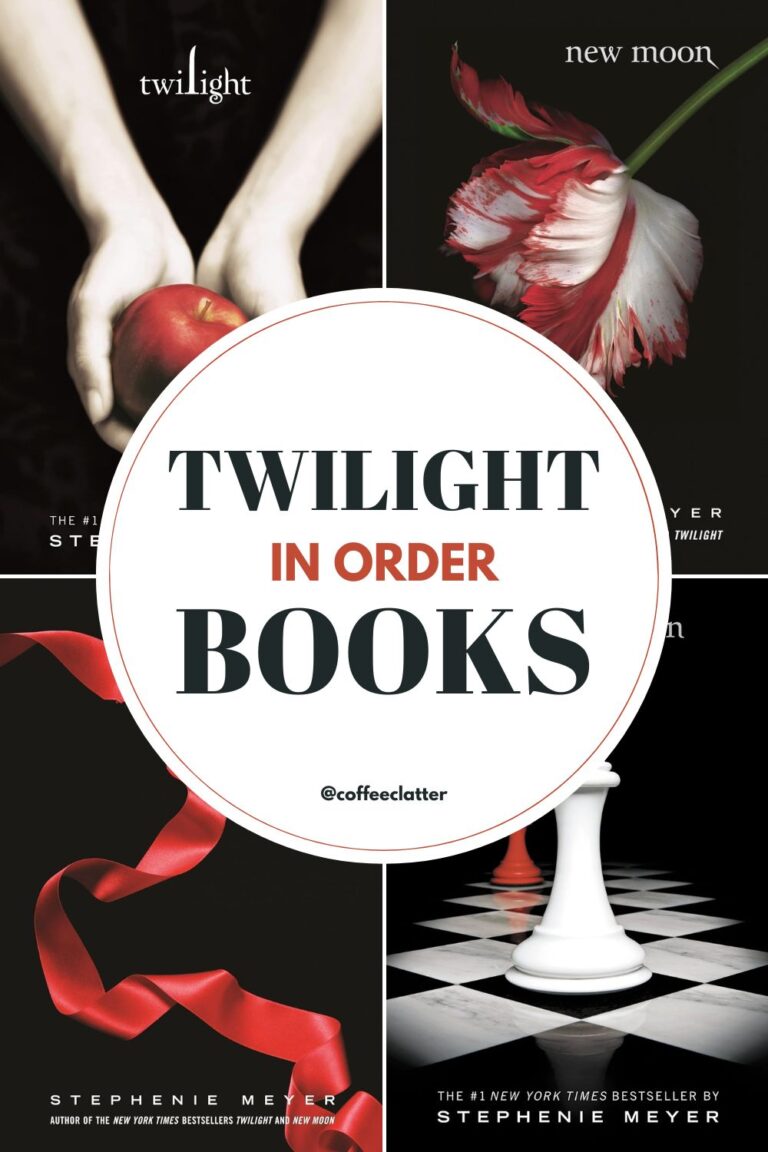14 Types of Coffee Makers and How to Use Them
When you fall down the coffee rabbit hole, you might ask yourself “is it really necessary to have more than one way to make coffee?!”. Why, yes. Yes, it is.
I wouldn’t have thought that when I first started drinking coffee. Drip coffee. After that, what’s the big deal? Turns out that coffee is a really big deal the more you get into it. And there are so many different ways to brew it, mix it, and make it.
Actually, there are 14 different types of coffee makers, each with its own pros and cons. Each one will brew coffee in a slightly different way. This detailed guide will explain the basics of brewing coffee. Beware, you might end up with more coffee gadgets and gizmos than you expected. Each and every one is necessary for optimum coffee consumption. *wink*

Things to Consider When Choosing Your Next Coffee Maker
- Type of Coffee: Determine the type of coffee you prefer. Different machines are designed for different coffee types, like espresso, cappuccino, or drip coffee.
- Capacity: Consider the volume of coffee you consume daily. If multiple people in your household drink coffee, a larger machine may be more appropriate.
- Features: Look for features that suit your lifestyle. Some machines have programmable settings, built-in grinders, or auto shut-off functions.
- Ease of Cleaning: Some coffee makers are more difficult to clean than others. Those with fewer detachable parts can be easier to maintain.
- Price: Determine your budget. More expensive models often come with additional features, but may not be necessary if you simply want a basic brew.
Drip types of coffee makers
Drip coffee maker is one of the most popular coffee makers in American homes. You can usually find them in your work office, most kitchen counters, and the local gas station. Depending on the type, you can brew from one to 14 cups. Drip coffee makers go from the most simple mechanisms to complicated and pricey machines with extra perks, like thermal carafes, and heating pads.

How does a drip coffee maker work?
Start with adding cold, clean water to the reservoir. Add freshly ground coffee to the filter and turn the maker on. Hot water will pass through your grounds and then drip into the pot, filling it in minutes.
Pour-over types of coffee makers
Pour over isn’t technically a coffee maker, it’s an infusion method. It’s one of the oldest coffee brewing methods known, but gained popularity with the rise of small coffee shops and exclusive coffee beans. Fresh ground coffee is amazing when made with the pour-over method.

How does a pour-over work?
There are two ways to use the pour over method to make a cup of coffee.
The first, take your favorite cup, and put the coffee filter inside. Chemex is one of the most popular choices for a pour-over method. I prefer to use non-bleached paper filters or cloth filters. Gently adjust the filter, so it fits perfectly into your cup. If needed, rinse the filter with some hot water to ensure the proper fit. Add medium-grind coffee into the filter and pour the hot water over slowly. This takes some patience, as the grounds shouldn’t lump. You want to move the water stream around a bit so your coffee grounds “bloom”. This means they absorb that first bit of water and swell a little. Once they are all soaked, they hold the water a little longer and ensure you are getting a good “release” of coffee-infused water. After about 4 minutes, remove the filter, and your pour-over coffee is ready.
The second way to make a pour over is to get a holder that sits on top of your cup. This is my preferred method because I almost inevitably drop the coffee filter into my brewed cuppa joe with the first method. You just put the filter holder over your favorite coffee cup, tuck the filter into it, fill it with grounds, and then soak the grounds with water and wait for it all to drip into your cup.
A water kettle (either the stovetop version or an electric one) is your best friend with this type of coffee maker. Having hot water ready in just a few minutes and ready to pour into your grounds when you are ready for another cup of coffee is a must.
Single-serve capsule types of coffee makers
This is a fool-proof system, fully automated. Keurig and Nespresso are two of the most famous companies that produce machines and pods. You can choose from a variety of pods and sort them by taste, size, materials, and recyclability. These machines are small, compact, and usually have an elegant design. Single-serve machines are popular inside smaller offices and solo coffee drinkers.
There are also variations that include a drip feature for a full pot of coffee. A two-in-one machine that works great when you have company or know that you will be needing more than a single-serve option.
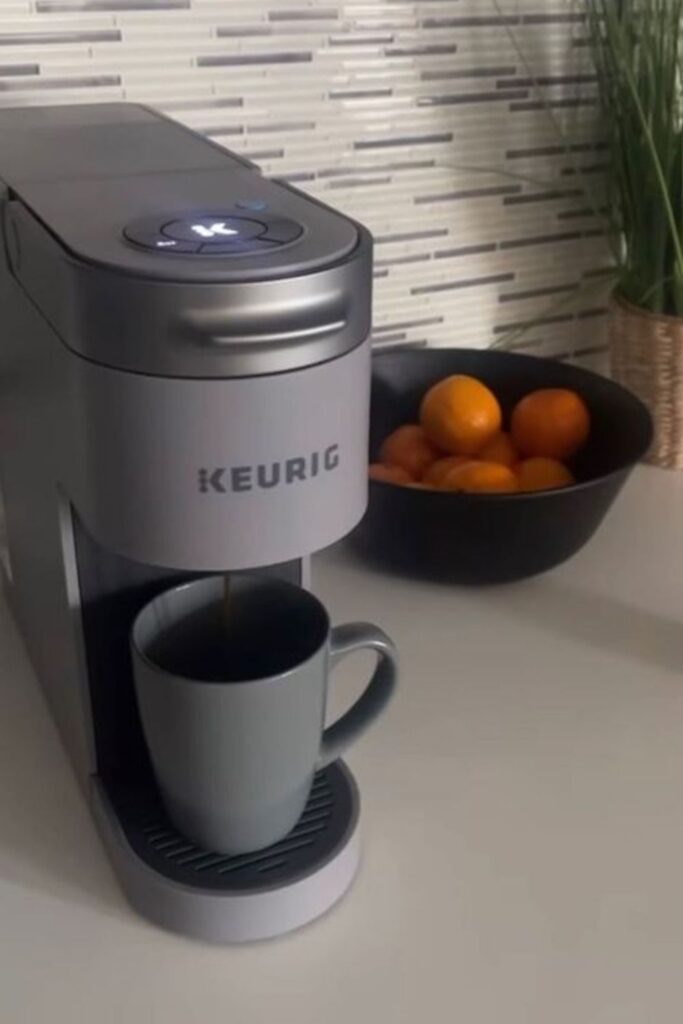
How does a single-serve capsule type of coffee maker work?
Single-serve uses premade pods or capsules. These pods already have coffee grounds sealed inside and ready to use. Insert the pod into the maker, put your cup under the dispensing area on the little tray, and press the button for the amount you want in your cup. A smaller cup means a stronger brew. The maker automatically extracts the coffee from the pod, and even filters it, so you have no worries. After your cup of joe is done, just toss the used pod into the garbage. If you are using reusable pods, I usually place them on the edge of the sink until they cool down, and then clean them out into the compost or garbage. Rinse. Repeat.
French press types of coffee makers
A French press is a simple mechanism that will always provide you with a great cup of coffee in less than five minutes. The sizes go from a single cup up to 14 cups. A French press can be made from stainless steel, glass, plastic, or porcelain. You can even get an all-in-one French press travel mug, so you can enjoy your beans wherever you go. The French press also comes in an electric version that will preheat your water without using additional household appliances.
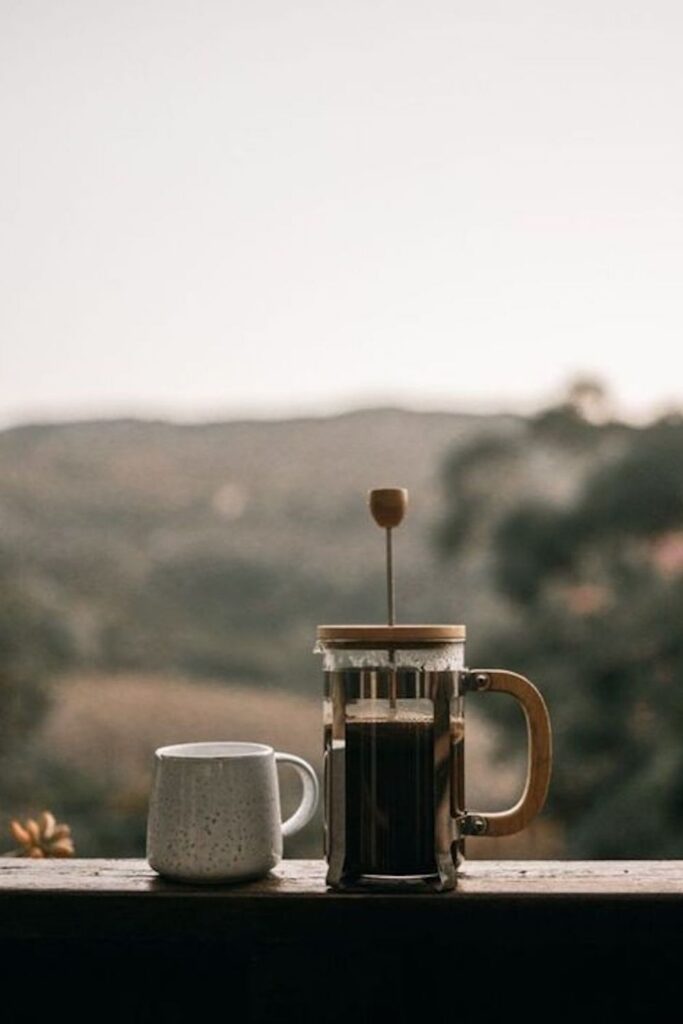
How does a French press work?
Fill the French press with the desired dose of coarse or medium-grind coffee. Pour the freshly boiled water over the coffee, stir, and wait four minutes. After the time is passed, slowly press the plunger to extract the maximum flavor from your beans. French press comes with a built-in filter, so you just pour your coffee into a mug and enjoy.
To clean out your French press, just swirl a bit of water into the grounds (if they are all thick and sludge down there) and then dump it into a specified compost container or the trash. I toss mine outside on different parts of my lawn or into my plants when it isn’t snowing. Automatic composting and fertilizing. Now and then I will pour the sludge into my house plants too. Makes them very happy.
AeroPress types of coffee makers
This lovely device was invented by Alan Adler, professor of mechanical engineering at Stanford University. The AeroPress coffee maker is somewhat similar to a French press, although it requires more force to extract the coffee. With this simple device, you can make espresso, Americano, and even a cold brew. AeroPress is the favorite choice for bean heads that make smaller coffee batches, usually for one person.
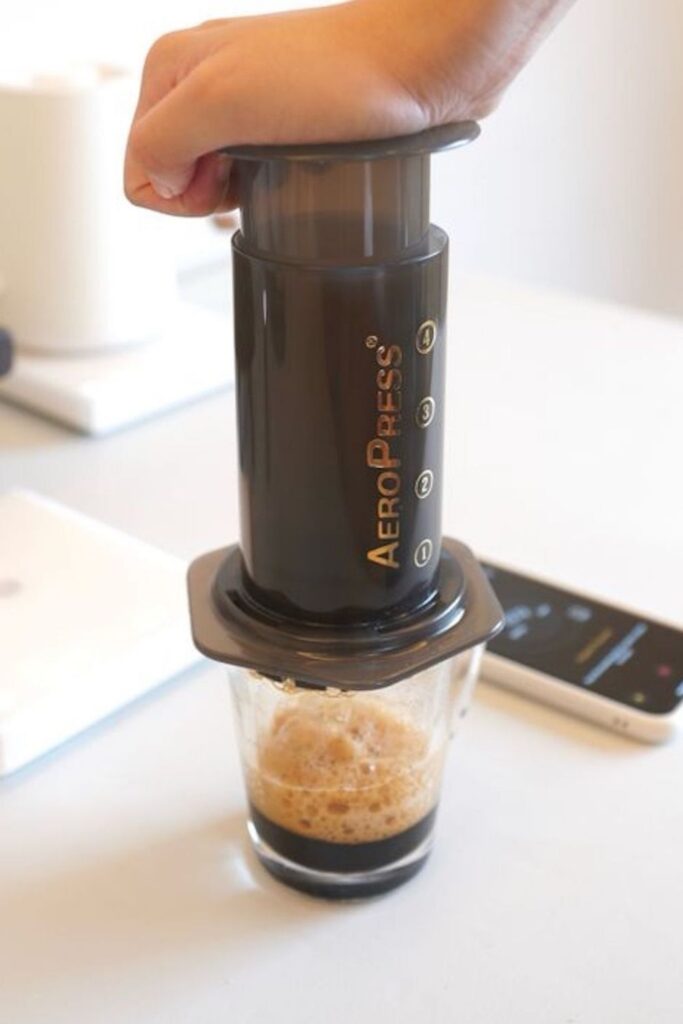
How does an AeroPress work?
This machine uses air pressure to force the water through coffee grounds and extract them. You just add the desired amount of fine coffee grounds to the machine’s base. Next, fill the base with water heated to 170F. Put the paper filter into the cap and attach it to a base. Put the base over your favorite cup. Stir the grounds a little bit, and then press the plunger. Water will pass right through your coffee grounds, extract them, and pour into your cup.
Cold brew types of coffee makers
Cold brew is a process of making larger batches of coffee using just coarse grounds and room-temperature water. No electricity or fancy equipment this time. This is a great way to ensure you will have a week’s worth of coffee, without sacrificing the taste of it. The cold brew method will provide you with a dark, full-bodied taste that no hot water method can copy.
How does a cold brew maker work?
Start by filling the carafe with coarse ground coffee. Then, add five parts of room temperature water for every part of the coffee. Stir for half a minute, so every particle is adequately soaked. Depending on your preferences, you can leave the coffee steeping from 12 to 24 hours. After the coffee has been properly extracted, it’s ready for consumption. Pour the rest of the batch into an airtight container and put it in a fridge. Now you have a coffee supply to make iced coffee, cafe latte, coffee cocktails, coffee with cold foam, or anything else you desire.
Espresso coffee makers
Espresso is the king among the coffee makers and every barista’s favorite choice. Especially when it comes to practicality, quickness, and simplicity of use. It’s also the only coffee maker that will give you a proper espresso. It works by moving hot pressurized water through finely coarse ground, in a process that should take about 25 seconds.

Types of espresso coffee makers
- The manual type requires the user to do all the things in a process. That includes creating enough pressure, grinding the beans, tamping, and all the other things needed to make a good espresso. This type is popular among true cafe aficionados who take great pleasure in the coffee-making process. Hence, it’s not a very good choice for beginners.
- The semi-automatic type allows you to choose the desired amount of water, so you can also make Americanos, not just espressos. This type is slowly on the verge of extinction, and the reasons lie further in the list.
- The automatic type will take most of your worries out. Your job is just to grind the desired amount of beans. However, some of these fine machines also have a built-in grinder, so they are even simpler to use. Small automatic espresso makers are often found in the homes of coffee aficionados who adore only espresso and nothing more.
- Super-automatic machines do all the work for you. Your only job is to choose the type of drink you desire and wait for it to be brewed. This type is also the most expensive one, so it can usually be found in larger coffee houses that serve several hundred (or more) drinks daily.
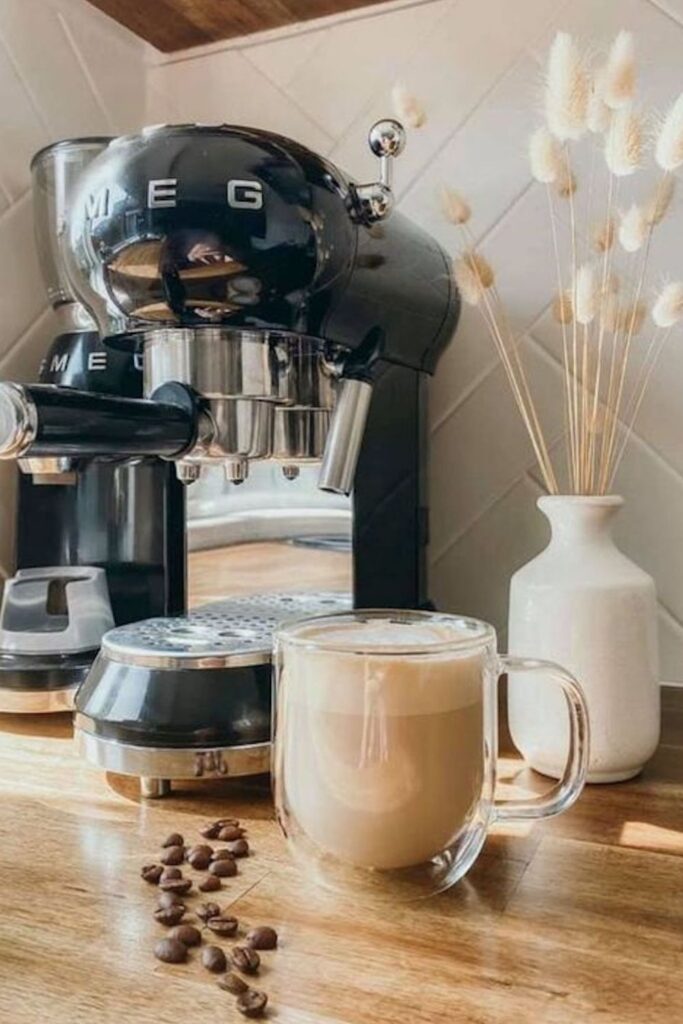
Stovetop types of coffee makers
Also known as Moka pot, this is the closest thing to real espresso. Italian Espresso National Institute (yes, that exists) has declared that the minimum pressure needed for the proper extraction of the espresso is nine bars. Sadly, our Moka pot can’t produce it, but it will give you a rich, dark shot of almost espresso. Moka pot is quite popular for espresso lovers who just refuse to pay ridiculous amounts of money for an espresso machine.

How does a stovetop coffee maker work?
Every stovetop maker has three parts. There is the base where you add the fresh water, a basket to place the grounds, and then the well or pot where the espresso bubbles into.
- Add water to the base part. There is usually a “max fill line”.
- Fill the basket with fine coffee grounds, and place it into the water base.
- Next, attach the pot to the bottom container. This is the part where your coffee will appear.
- Lastly, place your stovetop maker on a source of heat. Water will start boiling in the base, push up through the grounds to extract them, and finish in the container part. This part of the process is fast (once the water starts to push through). Listen for it to make a spitting noise and remove it from the heat immediately.
Grind and brew coffee maker types
Grind and brew is a cooler cousin of the regular drip coffee maker. This part of the coffee maker family has a built-in grinder. Meaning, your coffee will be made from fresh grounds, always. These are a little more expensive compared to the usual drip coffee maker. But worth it if you want to program it so there is fresh ground AND fresh brewed coffee in the pot when you wake up.
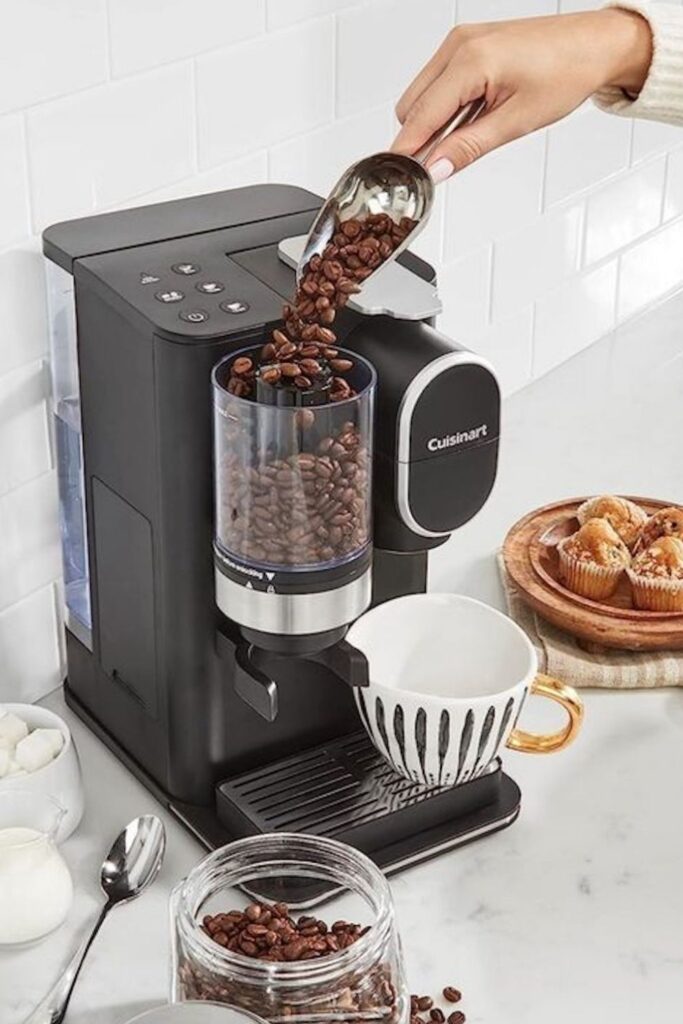
How do grind and brew coffee makers work?
The principle is the same as with the usual drip coffee maker. The only difference is the built-in grinder. There are two types of grinders available for this maker:
- Blade grinder, that uses the blade to chop the beans. This is a more affordable option, although your grounds can sometimes come out uneven. Also, the blade can overheat, resulting in the burnt flavor of your coffee.
- Burr grinder, which usually uses disks to grind your beans. The discs are made from hard metal that doesn’t heat up easily and will provide you with an even texture every time.
Turkish coffee maker type aka ibrik or cezve
For a Turkish coffee, you will need the finest ground ever. Turkish coffee is one of the oldest coffee-preparing traditions, and its variations are known as:
- Greek coffee
- Bosnian coffee
- Serbian coffee
Turkish coffee is usually served in the Balkan Peninsula, and of course, Turkey. It’s very dark, very strong, and unfiltered. The taste somewhat resembles the French press. The usual type of serving is in small, traditional cups, espresso-sized.
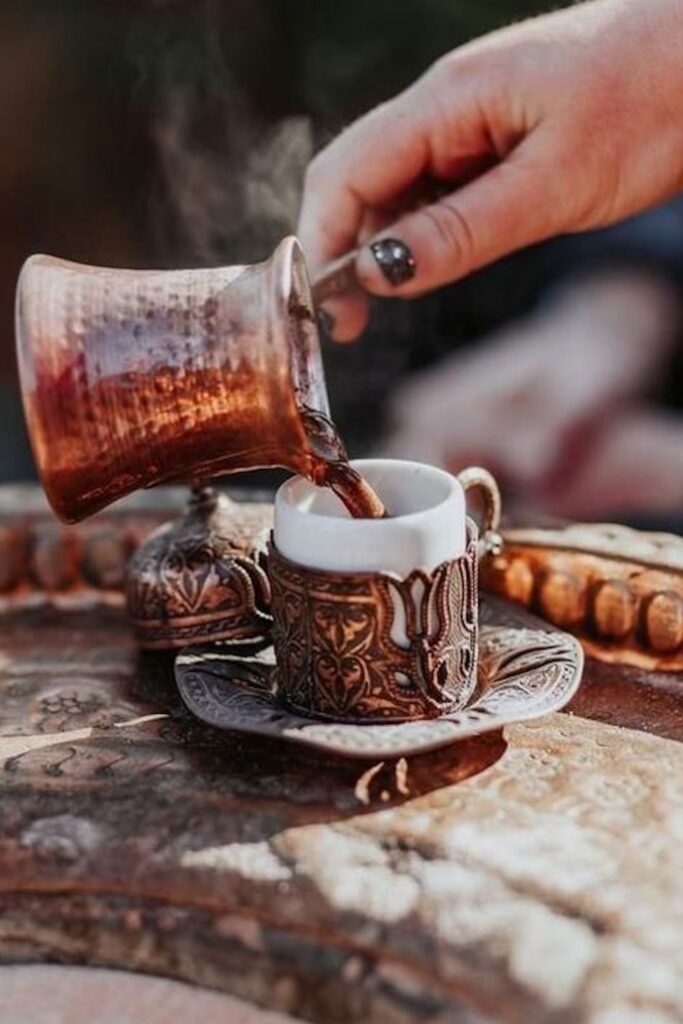
How does a Turkish coffee maker work?
It’s actually a small pot that resembles a butter melting pot. The original recipe was to add the finest coffee grounds to cezve and pour it with water almost to the top. Then, you put your cezve on a source of heat (these are the ones you see where they sink it into a container full of hot sand) and wait for it to almost boil. Remove the cezve from the heat and pour the coffee into the cups. Don’t drink the last sip because it will be full of sediment.
Steeped coffee
Notice the lack of the “maker” part in the title? This time, you don’t need a coffee maker of any sort, just some hot water. Steeped coffee is a coffee in bags, just like tea. Your only job is to acquire a cup of boiling water and add a bag of steeped coffee inside. Steep for six minutes and you are good to go. Steeped coffee is the favorite choice of travelers, picnickers, and people who want a lightweight coffee option on the go. The downsides are that the taste is far from the classic flavor of regular brewed coffee, and waiting 6 minutes means your drink is a little on the cooled-down side.
Phin or Vietnamese types of coffee makers
Phin is a Vietnamese pour-over machine. Small, convenient, and made of firm metal. This is a perfect choice for single-serve coffee lovers, as Phin is easy to use, clean, and dispose of. Imagine it as a crossover between the French press and the pour-over method. Also, arm yourself with a bit of patience because it’s not exactly the quickest way to brew coffee.
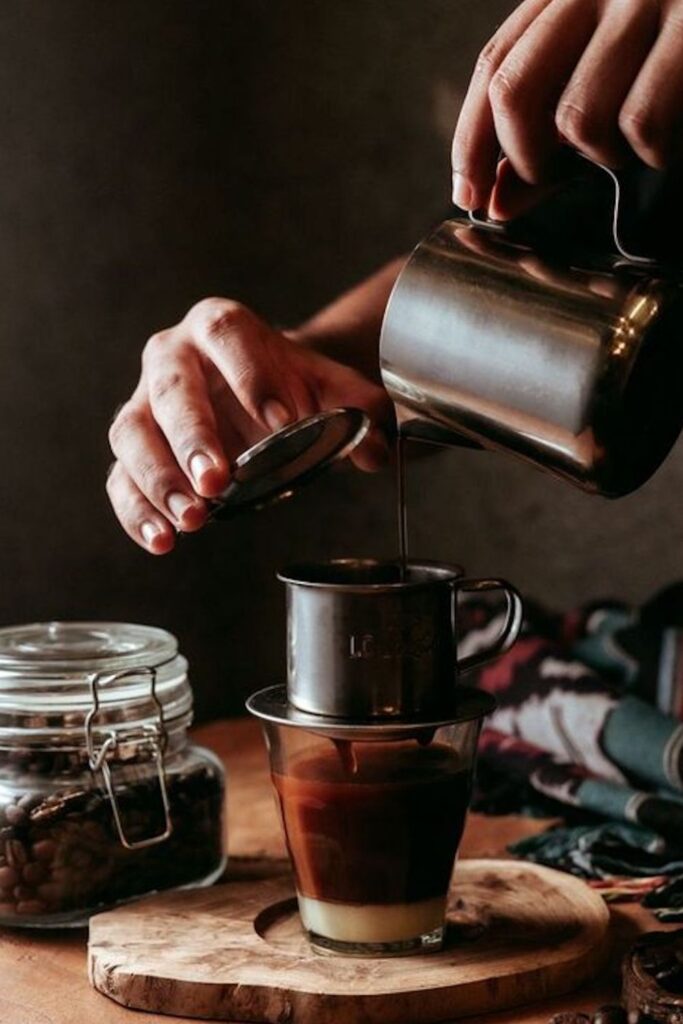
How does a Vietnamese coffee maker work?
The bottom of the base has small holes, similar to the filter. You traditionally first pour a little bit of condensed milk into a glass. Then, you put the Phin base on the glass. Add the desired amount of fine ground coffee to the container part of the Phin.
Add a small bit of boiling water just to soak the grounds and make them bloom.
Fill the container with your desired amount of water (you can do a second fill with the same grounds for a less potent brew). Put the metal lid (top filter) into the base and wait. Coffee will now slowly start dripping into your glass. Wait for the last drop, then remove the base, add your cream, condensed milk, or other options, stir your coffee, and enjoy it.
Siphon or vacuum types of coffee makers
This is one of the most beautiful coffee makers you will ever lay your eyes on. And not just that, you can entertain your guests by showing them the process of coffee making and explaining the science behind it. Too much? People have been doing it since 1830 when the first vacuum coffee maker was patented.
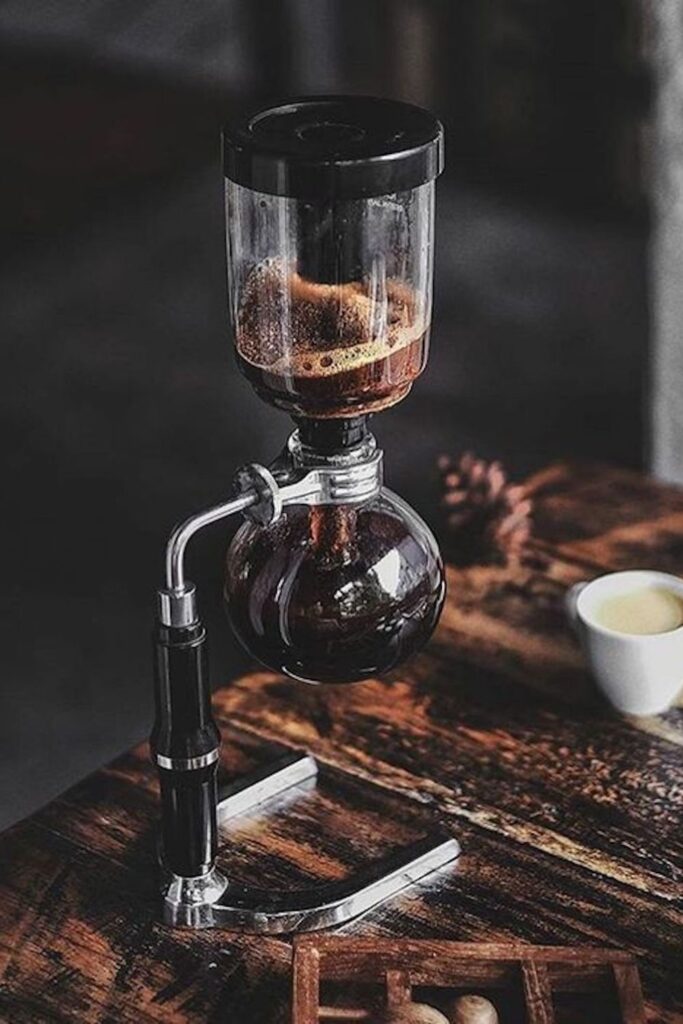
How does a siphon coffee maker work?
Yay, science! So, you have two main parts, the base, and the jug connected with a funnel. You pour the water inside the base and put it onto a heat source. After that, you attach the jug. The jug has a built-in funnel with a coffee filter. When the water starts boiling, it will rise from the base to the jug. When your jug is filled with water, add coffee grounds, and stir. After a couple of minutes, remove the siphon coffee maker from the heat source. And now, our favorite part. As coffee gets cold, it will gradually flow back to the base, filtering itself. The base usually serves as a serving carafe too, but you can always decant your siphon coffee using another jug.
Percolator types of coffee makers
Percolator was America’s favorite coffee brewing method until the drip coffee maker took over. They are widely known as one of the fastest ways to produce a hot cup of coffee, or 12 cups, for that matter. You can choose stovetop percolators or electrical ones. The stovetop version is notorious because it’s hard to control the water temperature, so you might just end with an over-extracted coffee if you are not careful enough.
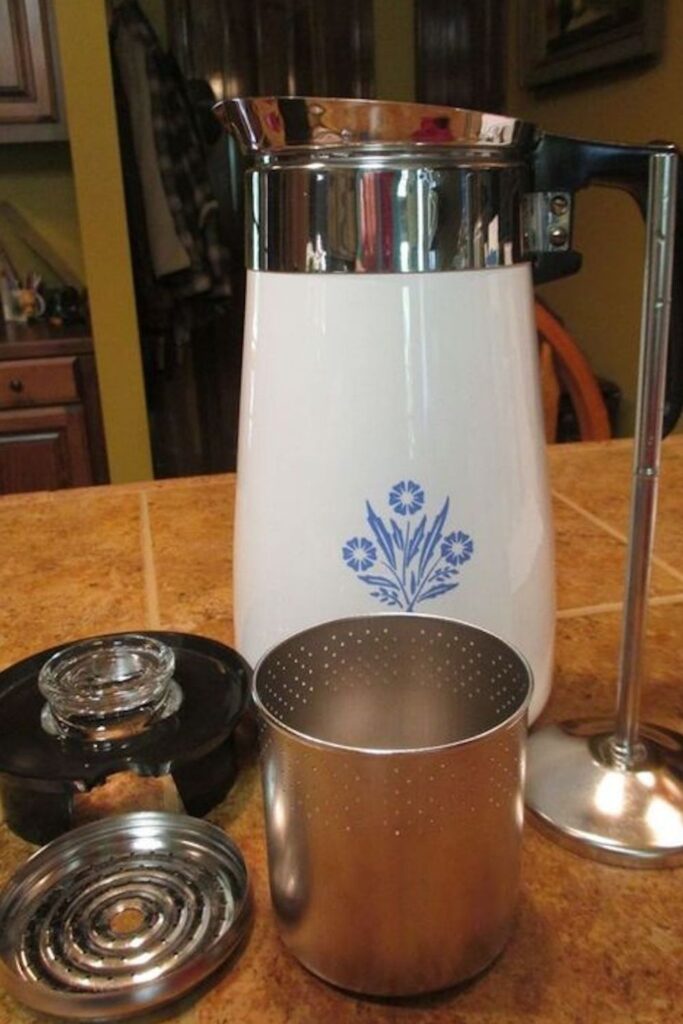
How does a percolator coffee maker work?
You have a carafe with a small bottom chamber. A vertical tube is placed on the top of that chamber, and it goes up to the lid. Below the lid is a coffee chamber. Fill the coffee chamber with coarse-ground coffee, and then add the required amount of water to the carafe. As the water gets warmer, it will cycle inside the percolator, flow up through the tube, and filter down through the coffee basket, extracting the coffee. Just before the boiling point, coffee is ready to be served. Automatic percolators will reduce the heat immediately at that moment. With the manual percolators, you must recognize the sound of water boiling, and remove it from the heat source.

Do You Have a Favorite Coffee Maker?
That is a lot of coffee (and caffeine) goodness right there. It is absolutely amazing to think of all the different ways to brew coffee. Not to mention all the variations and ways to drink it once you have it extracted from the grounds.
Do you have a favorite? Curious minds want to know…how many methods for making coffee do you have in your household?
I have a bit of a coffee fixation (as if a blog about coffee and books didn’t already scream that). I travel with a pour-over and a French press. There is an espresso machine on the counter, a Moka pot in the cupboard, and a percolator in my camper. In the past, I have owned a Keurig. I’m not sure if I will replace that or not. I’m contemplating a cold brew pitcher and a Vietnamese Phin at the moment.






